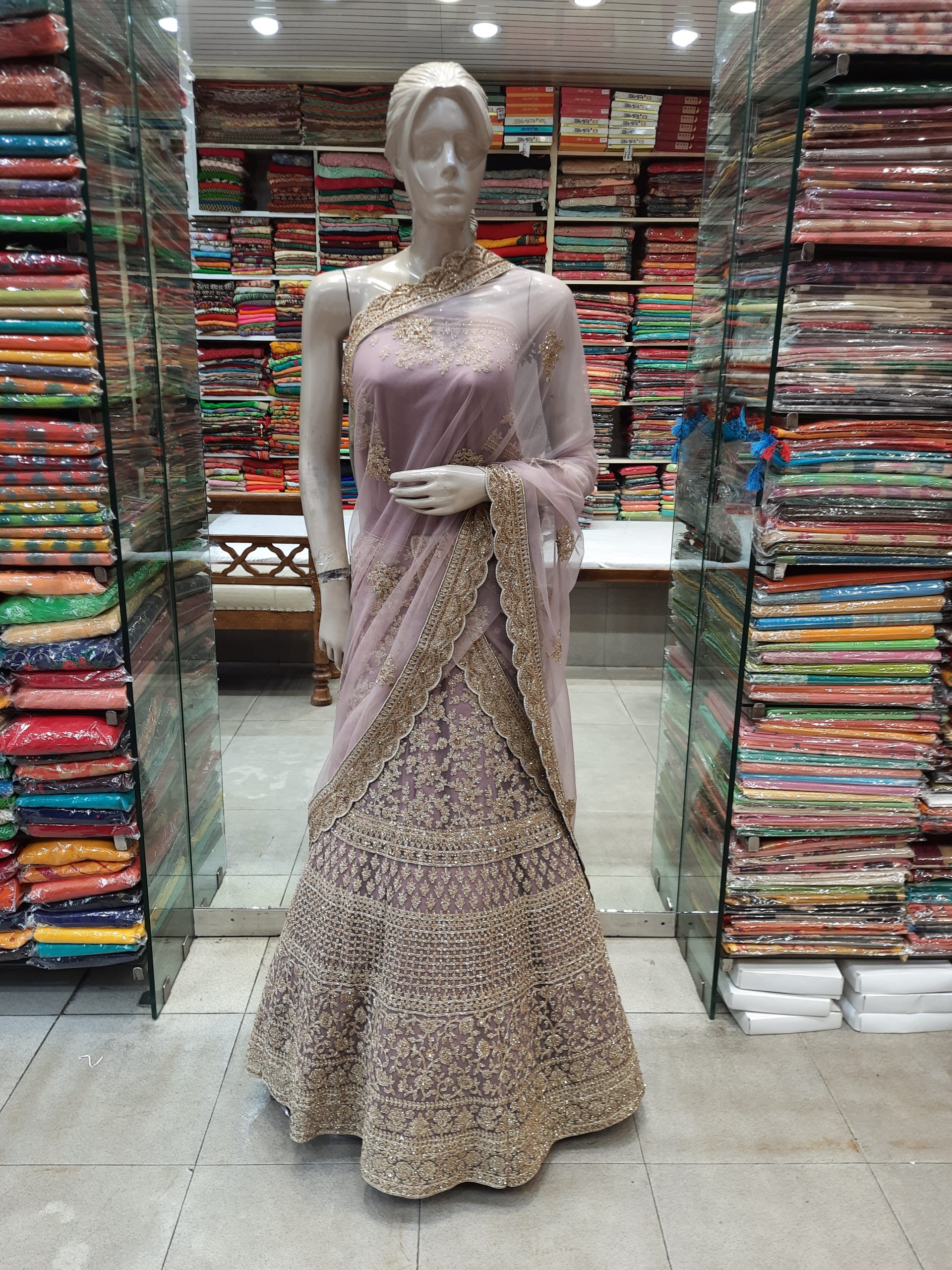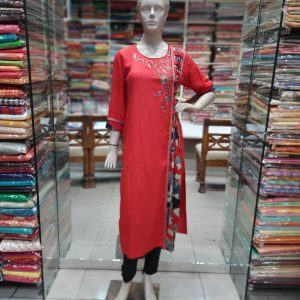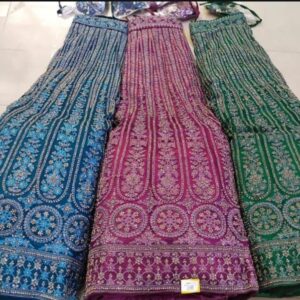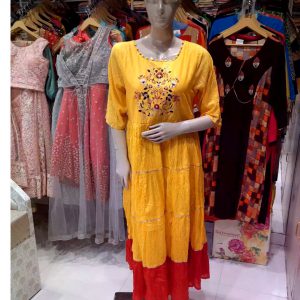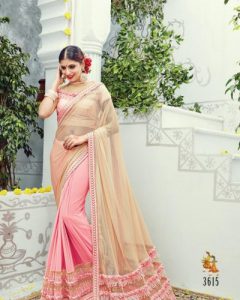
Saree, also called Sari, is the most popular Indian dress which Indian women wear not only in India but also all over the world. Because of its sensuality, the saree has grabbed attention since ancient times. A saree makes a woman look gorgeous stylish, and elegant.
Women can wear the saree which, is available in 3.5 to 9 yards in length, in different styles to define beauty and versatility.
The women wear these fashionable attire on almost all occasions. The women in a different region in the world wear saree in different styles according to their culture and religion. Available in various fabrics, designs, and colors, sarees are a must in the Indian Women’s wardrobe.
Due to the unparalleled charm of the present time saree, the sarees have got international acclaimation.
Importance of Sarees
The women around the world adopt the traditional styles and forms of sarees to the present trends. Furthermore, the saree Industry always invents new designs to attract the fashion loving women around the world.
Sarees have made inroads into the fashion industry today with people exploring the new fashion appearance with this tremendous Indian attire.
There are so many exciting options for saree lovers now, thanks to the unequal craftsmanship and artistic expertise displayed by skilled professionals working endlessly to make saree designs better than ever before.
Usually, women wear the saree along with a blouse or Jacket covering the upper part of the body, and a petticoat inside for the lower part, which helps to hold the saree in place.
Nowadays, Sarees have become under international influence due to its demand all over the globe.
It is a perfect dress for those who want to add fashion to their lifestyle.
History Of Sarees

The scared Indian epics like the Ramayana and Mahabharat mention the use of sarees. This proves that the history of Indian sarees is very ancient.
The existence of sarees has been traced back since ancient civilizations like the Indus Valley civilization, during 2800–1800 BC in the western part of the Indian subcontinent.
The historians put forward evidence to substantiate that women in the Indus Valley civilization used to cover themselves with a cloth.
This ancient garment had a resemblance to the saree, but the fabric and features were quite different from the saree that is present now.
Check the vast collection sarees
How was the word “Sari” or “Saree” derived?
“The old Buddhist literature mentions sari as “sattika” a Prakrit word.”
The word “sati” evolved into“sari” with the passage of the era. Indian customs and garments have come under the influence of so many cultures and traditions. With the emergence of the Aryans to the establishment of empires like the Mauyras, the Guptas, and later the Mughal empire, every major dynasty in India contributed to the evolution of the Indian saree.
The saree, as it is today, consisting of a blouse and a petticoat with a six to nine-yard long cloth, only was developed in the post-Mughal period.
The use of luxurious fabrics, ornamentations, and beautiful designs was combined by the master weavers to make this ethnic garment. It has indeed undergone a drastic transformation with the lapse of time.
People developed stupendous varieties to enhance the cultural, and traditional, values of sarees.
“the Greeks introduces the practice of stitching in India, and it transformed the dressing culture over time.”
As per the culture and material available, every region of India has evolved its peculiar style of stitching.
Moreover, the people developed their methods for weaving the fabric, dyeing, and printing.
The highly prized Indian Sarees are the outcome of unparalleled skill combined with the highly developed artistic expertise.
Importance of Saree in Indian Culture
India is a country of numerous languages, many traditions, a multitude of attires,and multiple methods of praying God.
Although India has various traditions, cultural differences, it were able to maintain it’s identity as a one.
There are a lot of languages, different beliefs, dresses, and customs all over India, but still, there is a sustaining link that binds the whole of India as one
India always accepts the best from foreign influences into its rich cultural heritage.
This aspect of Indian cultural set-up lead to the growth of the Indian traditional ‘saree’ or ‘sari.’
Sarees are always an integral part of Indian culture and heritage. Moreover, saree is a source of inspiration for costume lovers all over the world.
We can see the saree’s popularity in India from the fact that it is worn on almost all occasions and in day-to-day work.
When we talk of Indian women’s dress, saree is the most popular among outfits and is a must-have garment in an Indian women’s wardrobe.
How Women Wear A Saree?
Usually, women wear 9 yards saree on the religious and family occasions.
The people drape the pallu(the loose end ) of the saree differently in different regions.
They drape int he left in some region and the right in some part.
Some ladies, as per their family tradition, cover the head with pallu when they go outside or in respecting the elders.
Although western dress culture has deeply penetrated the Indian culture, there is no substitute for saree during the important ceremonies such as a wedding, religious occasions, and parties.
When it comes to the bridal wear in India, the most incontestable attire is the saree.
Explore the collection of Sarees
Adaption Of Saree By The Religions

Most of the Indian Christian brides prefer to wear a modest-looking white saree with a white blouse instead of their traditional Christian wedding Gowns. They covered either their heads by the end of the saree or a scarf.
South Indian Christian brides generally wear colored silk sarees
People prefer Popular silk wedding sarees from Banaras, Mysore, and Kaanjevaram. Similarly, cotton Handloom Sarees are from Calcutta (Valkalam) and South (crepe).
People love the Swiss cotton/ spun sarees in the Indian market. Other famous wedding sarees from Surat are Art Silk Sarees, Poonam saree, Micro Madhushree saree, Chiffon sarees, and Georgette.
Saree and colors
- Red color-Weddings, parties and other special moments
- Blue: Stand for peace and serenity. A lady can wear blue saree when she wants to stand out from the crowd.
- Orange: Standing for freshness and brightness can be worn in the day time.
- Yellow: IndicatesLight warmth and optimism and perfect for functions and ceremonies.
- Green: Means fertility and nature. Ideal for outdoor fun.
- Black: Ideal for every occasion and very suitable for evening parties and formal meetings.
- Pink: Pink means romance and femininity. It is a suitable choice for a date because of its close association with love.
- White: White color represents peace, purity, solace, and spirituality.The white sarees are suitable for festivals, functions, and daily events.
-
Kurti-Bottom Set
- ₹2,050.00
- Add to Cart
-
Yellow Kurti
- ₹2,150.00
- Add to Cart

